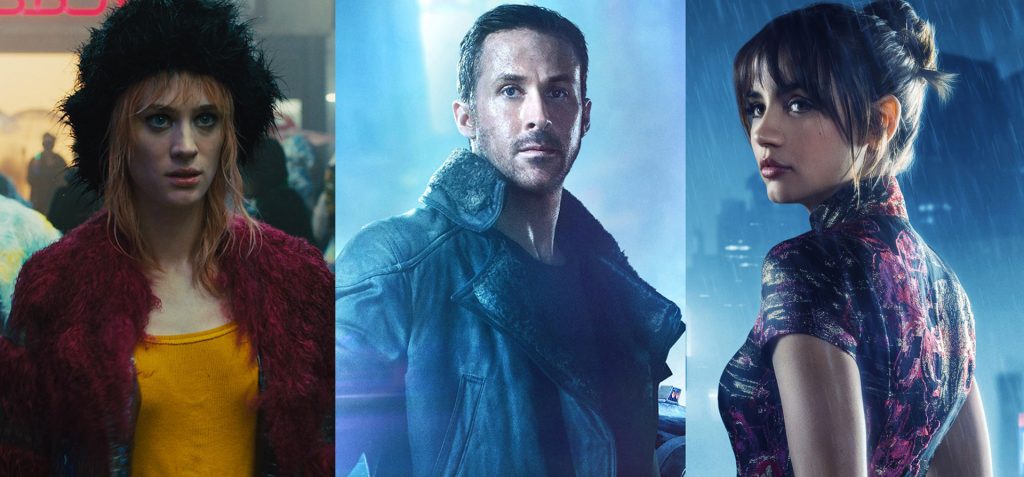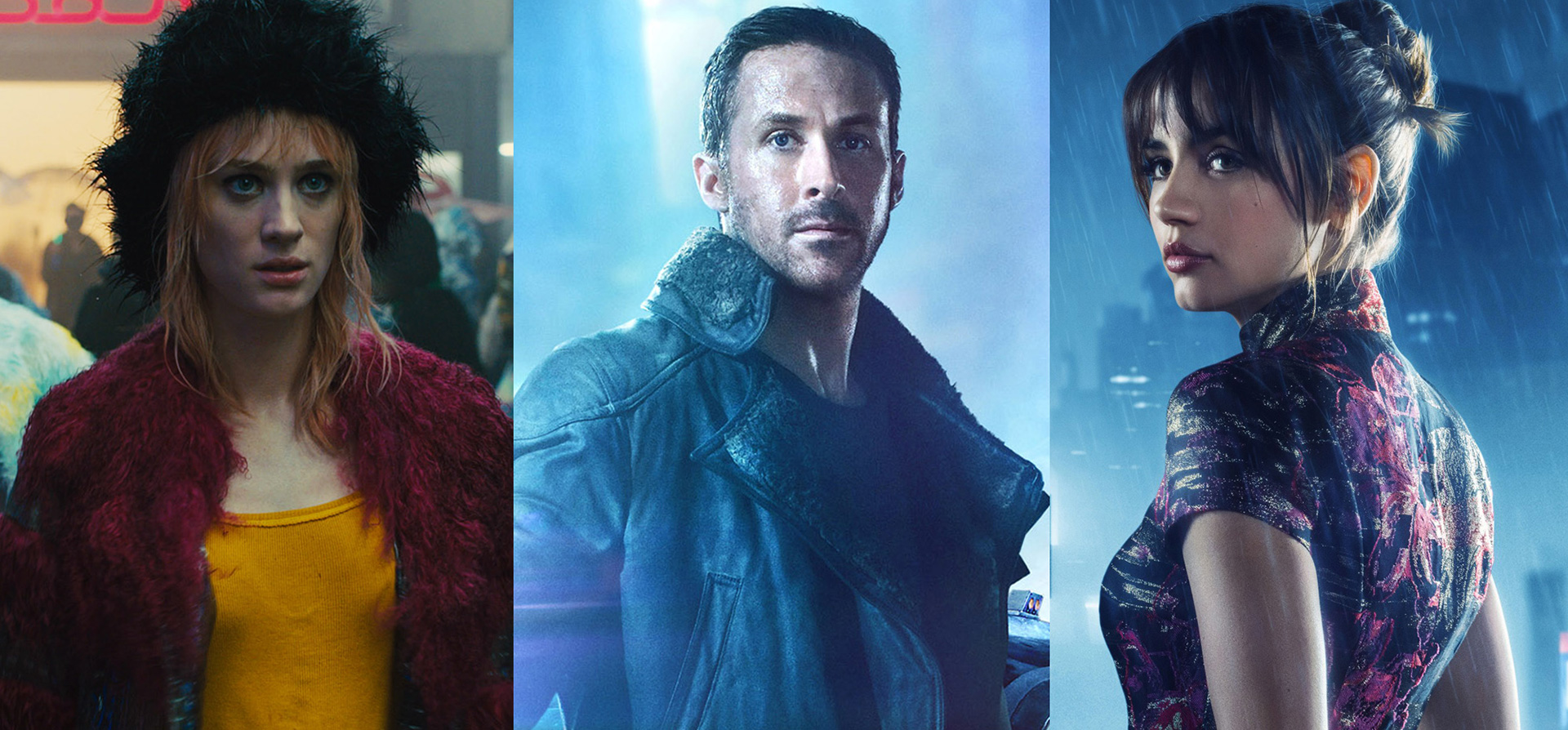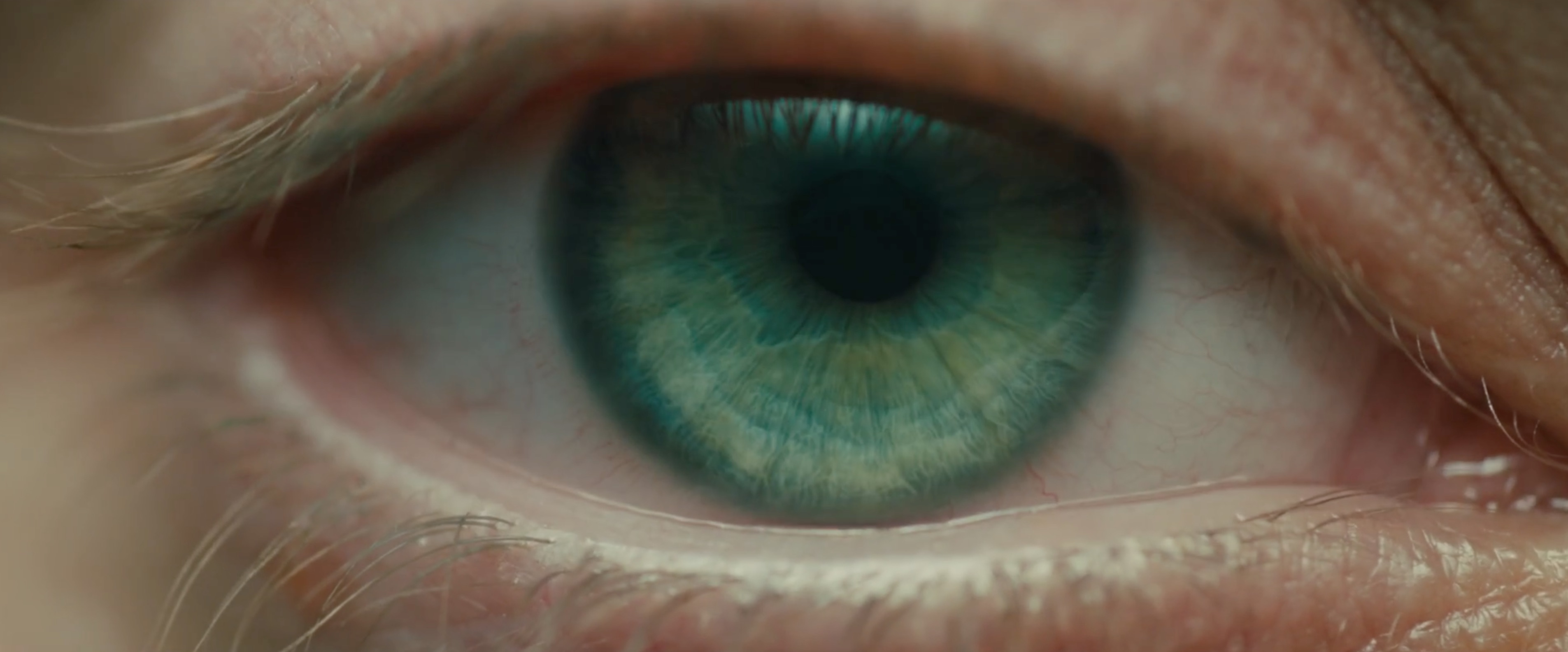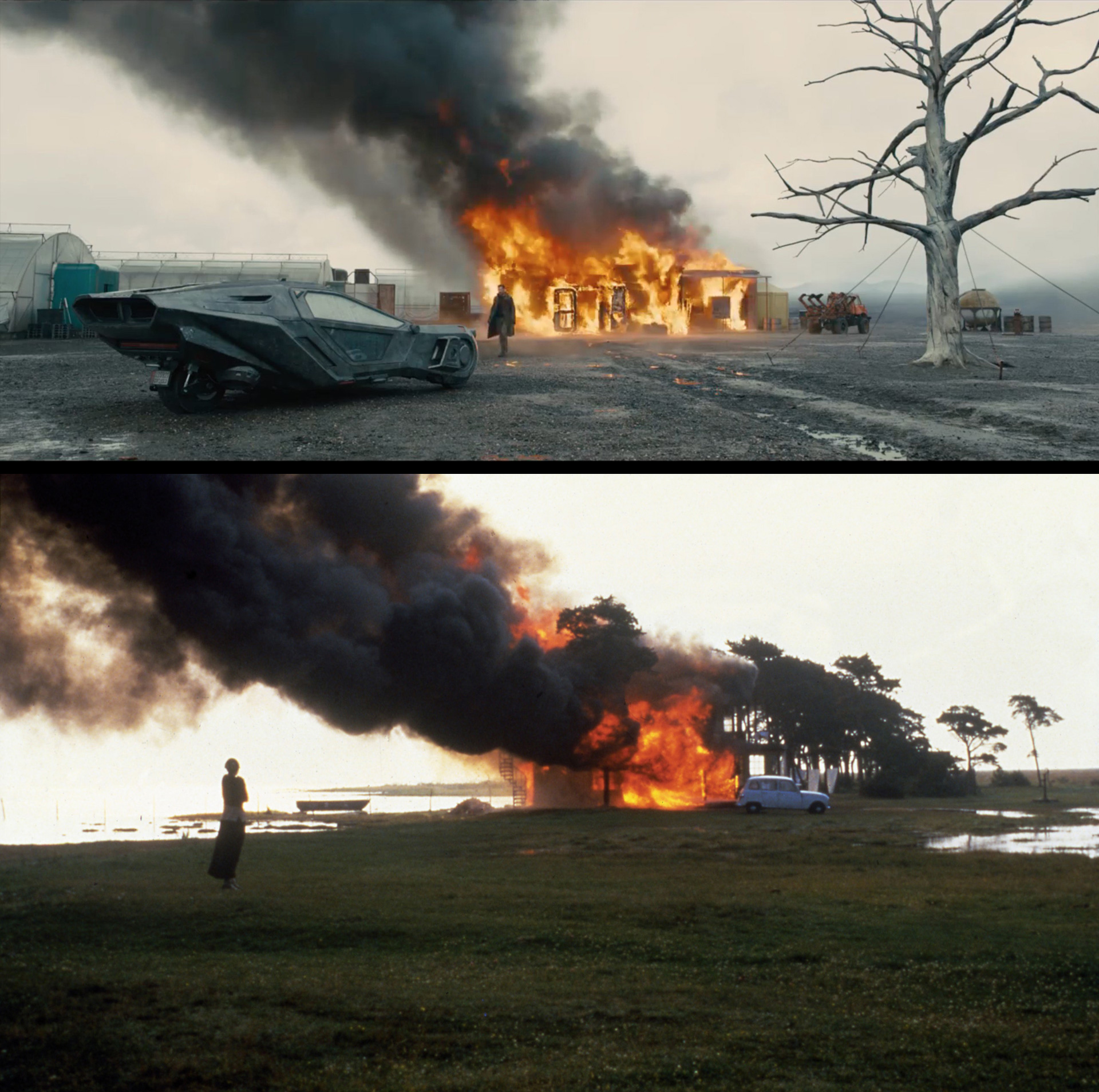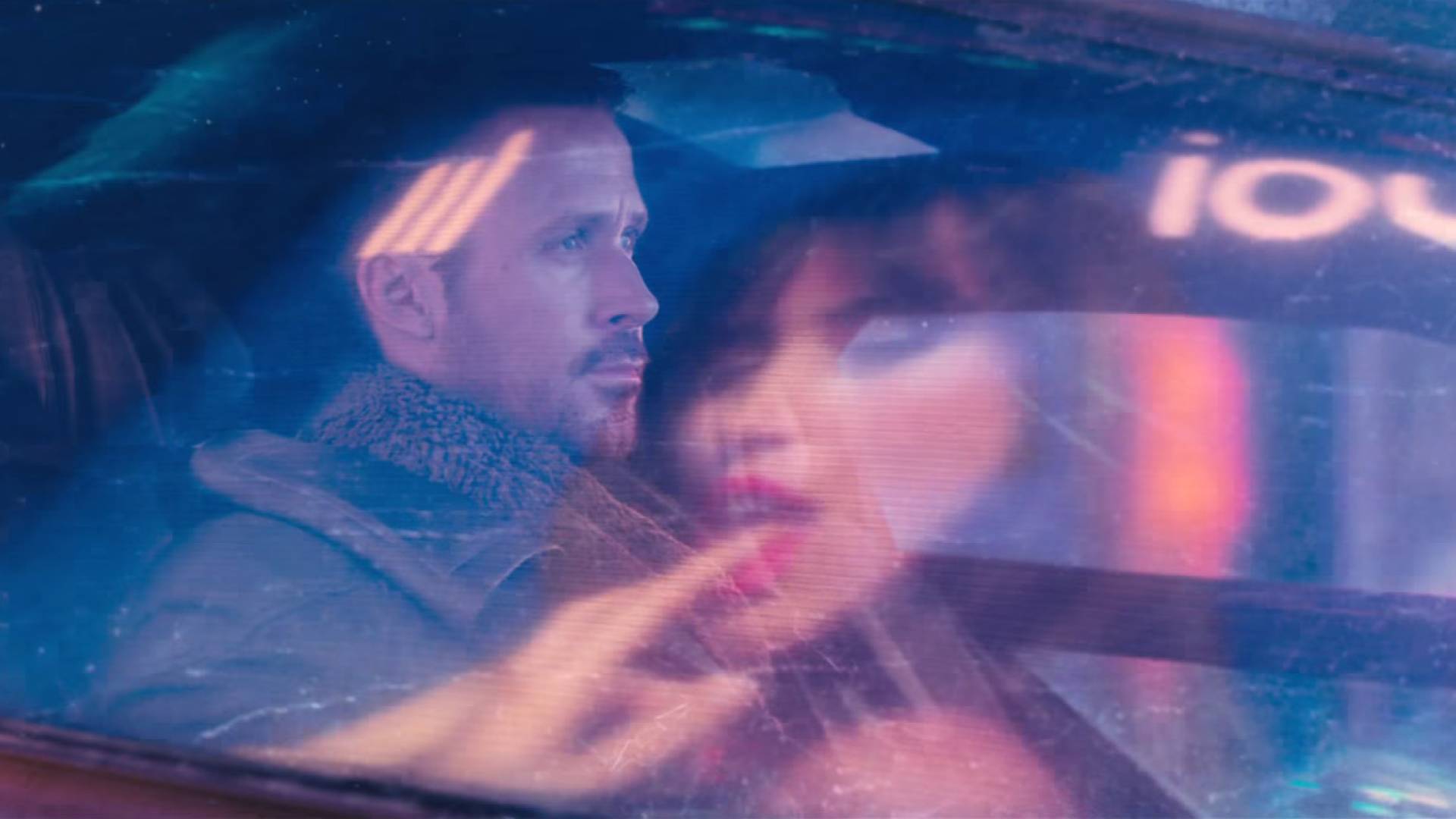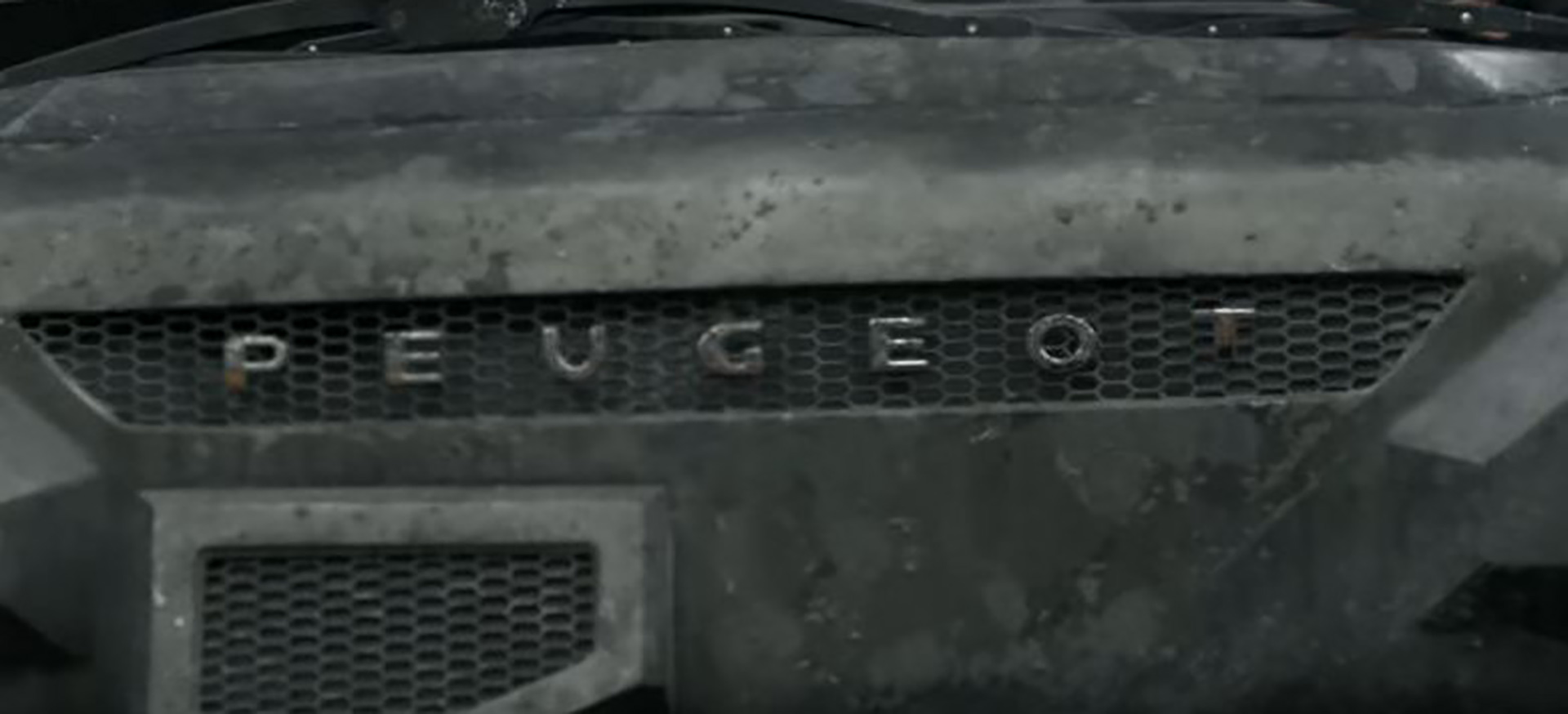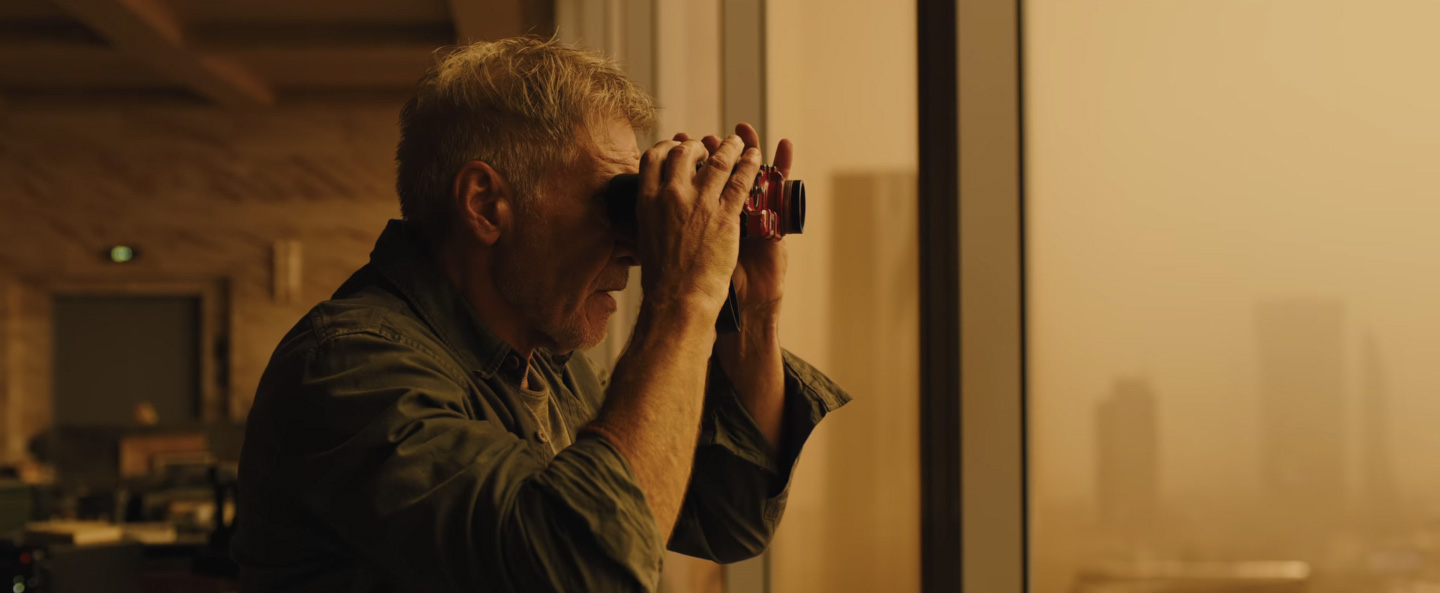
Blade Runner 2049 cinematographer Roger Deakins has been quoted in the clickbait media (basically every website now) saying “don’t see the 3D version”! Actually rather than slamming the 3D version, all he did was state a preference for the 2D version! In most cinemas the 3D version was the only one available, be it on a standard size screen or IMAX. This was the case in Berlin at Sony’s very own state of the art cinema, so I watched the film twice – the first time in 3D and the second time in 2D in a classic theatre.
Review (no spoilers)
If there’s any one shot from Blade Runner that sums up the differences between 2049 and the original it’s the opening one…
And the original shot it pays homage to…
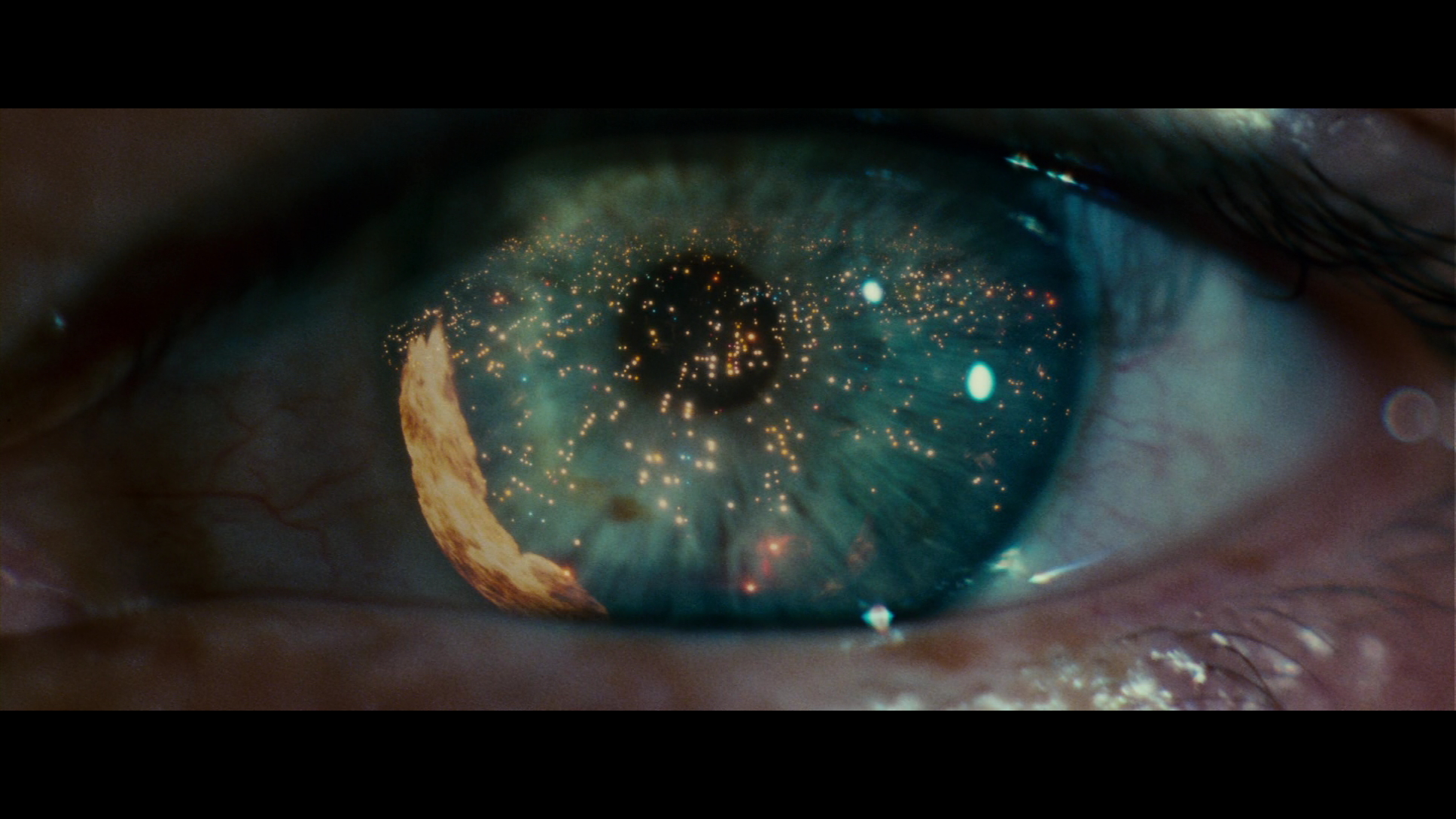
Personally I prefer the excitement of the original shot. This film is more naturalistic, clinical and sadly not quite as much fun.
Denis Villeneuve and Roger Deakins are the critics darlings. It’s a good film. But did I warm to it?
The Box Office has been “below expectations” and it’s not hard to figure out why, because Blade Runner 2049 isn’t a franchise, and fewer people have heard of the original than I (and the studios) first thought. A friend of a friend with our group at the second viewing thought 2049 was the screening time!
Turns out Blade Runner 2049 is a challenging ‘hard’ sci-fi based on a cult classic not a Sony summer blockbuster. As an aspiring filmmaker you can either go to be immersed in the story or see it as a technical achievement. It’s a better technical achievement.
The story concept is actually very interesting, but the screenplay doesn’t have the insight or wit of the original film. It’s a coldly unemotional delivery of a story that had bags of potential to induce a tear from even coldest of replicant viewers. It does pack an emotional punch but only at the very end. So on the first viewing I used it as a $10 Roger Deakins cinematography masterclass because the characters didn’t engage me until the final act. The Wallace Corporation scenes are a zen-like showcase for Roger’s lights and have more than a bit of Tarkovsky-style meta-psychical, slow-burning influence to them.
In fact certain other scenes seem directly influenced by the Russian director.
Above: Blade Runner 2049 and Tarkovsky’s The Sacrifice
Indeed the pacing of the whole film is glacial slow compared to most modern big-budget sci-fi films.
The Wallace Corporation is the successor to Tyrell corporation in the first film which manufactures replicants. Roger’s lighting is an unsettling, constantly shape-shifting presence here, like a third character in and of themselves. The scene with Harrison Ford at a critical moment has a warm-glowing fill light on his face before a deft mid-scene change brings his whole face into the shadows with a hard edged outline of his profile from a backlight that craftily moves into place…The odd thing is the make no attempt to hide the shift, you can see it coming… You can feel the mechanics of the light moving around, rather than it being a sudden staccato change on a jump-cut.
Roger Deakins is a genius BUT I think the decision not to shoot anamorphic was a mistake.
Deakins tends to shoot plain-old aspherical which is what he’s used to but for my anamorphic will always be a staple of sci-fi. I think anamorphic was so much a part of the Blade Runner look, and things have a more clinical feel this time, which was perhaps the intent. In fact the clinical, minimalist style takes away a good chunk of the fun here, even during a drab hologram-assisted threesome (with no nudity despite the R-rating) you’re left more stressed and unnerved than entertained. It’s the same feeling I had with Arrival, Villenueve’s previous sci-fi which was highly rated but I just didn’t warm to the characters that much! Strange.
The film also has a drab palette compared to the original. I found myself missing the neon-infused cyberpunk edge of the original Tokyo-style megapolis almost as much as the anamorphic look. It’s all been toned down to be more naturally dystopian. The city looks more ashen and there’s some obvious current-day product placement which doesn’t feel part of the cityscape.
A replicant is supposed to be more human than human… I’m not sure you can say that about the acting here apart from Ford. Leto has a mercifully short screen-time. This character, the boss of Wallace Corporation was originally intended for David Bowie. Officer K (Ryan Gosling) is well cast but his range limited compared to Harrison Ford’s Deckard in the original. Ironically, Harrison Ford is the best thing about Blade Runner 2049 apart from the cinematography. He has the vulnerability and humanity that feels forced in the rest of the cast you’re supposed to care about. The villains are chilling enough, but Leto (playing a cold silicon-valley inspired robot tech tycoon speaking cryptic nonsense) gets upstaged constantly by his female replicant assistant, who is the REAL villain of the piece.
The other villain of the piece is the advertising… The Peugeot unveiling comes at a critical moment of tension and got an audible groan from the audience. Should Denis Villeneuve have resisted the studio execs, trimmed the budget and convinced Sony to downscale their expectations for the film so that it could play to a smaller audience with fewer compromises? Yes, he should have but when Sony Pictures is promising you as director the earth it is had to say no. Sure, I realise the original film was full of neon signs and real-world brands, but it felt organic, somewhat other-worldly and not at all like paid product placement. You can’t say the same here.
The film has a hyper-realistic feel that extends to the combat scenes and most violent moments, which breaks me out of the film-noir mood that Blade Runner is supposed to convey. It seems that modern sci-fi films want to give heroes a human weakness, they can’t just be heroes. They want more realism to hand to hand combat, fight scenes, action sequences. The audio is bone-crunching. Is more realism always a good thing in sci-fi? Do we have to sit through such unimaginative UFC-style hand-to-hand combat and in one scene a smashed glass in a bleeding clenched fist or should sci-fi be a bit more imaginative and subtle than that yet – with an impact on our primal instincts? The film is also curiously devoid of wildlife and eccentricity, even of the replicant kind. No glass-eyed owl to be seen. The only animal in it is a dog. There’s a bee-hive. That’s about it. I miss the eccentricity of the 80’s in general, the outlandish sci-fi characters, now all we have is hyper-realism and sheer earnestness. What I loved about the original Blade Runner is that ‘regular-guy’ Deckard was put into a humdrum routine of repetitive detective work yet you could feel him going deeper and deeper into a subversive sci-fi world and plot like in a graphic novel, whereas here they do exactly the same thing with Ryan Gosling but I don’t care. He has a routine role as serial replicant assassin and we go deeper. What made me care about Deckard? Why is it missing here? Is it charisma? Is it a flaw in the script? I can’t quite put my finger on it because the character and story arc is so similar in both films regarding the main protagonist!
So is it going to be a box office failure turned cult-classic like the original? Will a new generation take it to their hearts as a classic film loved for decades? The original was a film that got everything right – the perfect script, the perfect story, the perfect director, the perfect cast, the perfect sets, the perfect cinematography, even the perfect sound track. The new one has 3 well cast characters but a host of forgettable other ones that aren’t in the least bit eccentric or interesting, a flawed screenplay, a decent story, very good cinematography but a more clinical look (that Roger might suggest serves the story), a sound track that is a brooding but without the tenderness or texture of Vangelis and a director who has defended the artistic integrity of the film from the studios (running-time, slow pacing in particular) – at the same time as failing to give it quite the wit or emotional engagement of the original. The only time I really felt something was at the end.
3D vs 2D screening
I get that 3D is an excuse to jack up ticket prices for major releases where the studio expects large audiences. It is however a failed and unwanted technology that will be superseded by VR headsets in cinemas – and then we are really moving away from cinema and into the realms of solo interactive entertainment.
Blade Runner was shot in 2D by Deakins, and transferred to a 3D version in post. I find it removes the shallow depth of field and bokeh of the 2D version and replaces this with depth perception. The problem is this perception is a bit too in your face and realistic for you to forget about it and see it as an illusion. It breaks a spell for me. It stops me from feeling anything.
I enjoyed the film on the second viewing for two reasons. First of all, I didn’t have a corporate executive philistine on a date with his 18 year-old intern sat next to me yawning and talking throughout the film. It was in a more local Berlin neighbourhood theatre that has an absolutely huge screen but better audiences who go for films rather than for nacho dinner time make out sessions.
The second reason was a combination of 2D and a more focussed attention on the story rather than the visuals. I’d been mesmerised by my Deakins cinematography masterclass and it was time to get past that and devote more of my focus to what came out of the actors mouths. It’s not that witty in terms of the delivery but it does create some questions and discussion with your friends afterwards. I can’t even begin to explain the story without spoiling it.
So my suggestion is, follow Roger’s advice – see it in 2D, try to avoid the popcorn munching crowds Sony thought would flock to see a Blade Runner sequel and watch the original film first to refresh your replicant memories.




